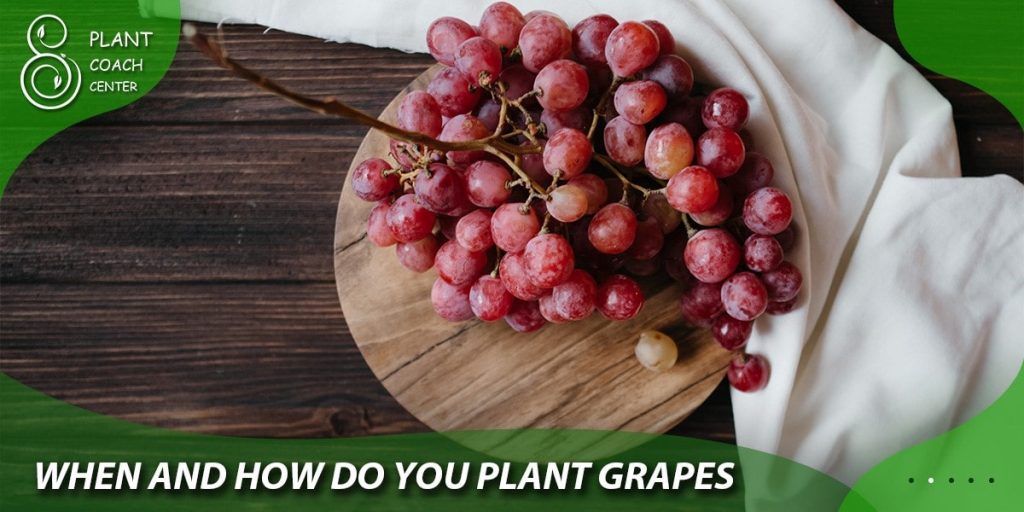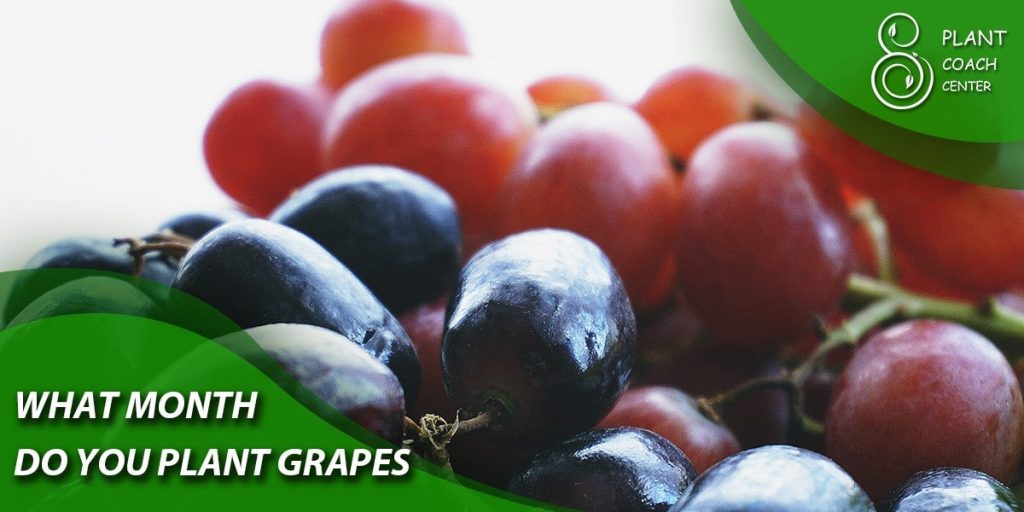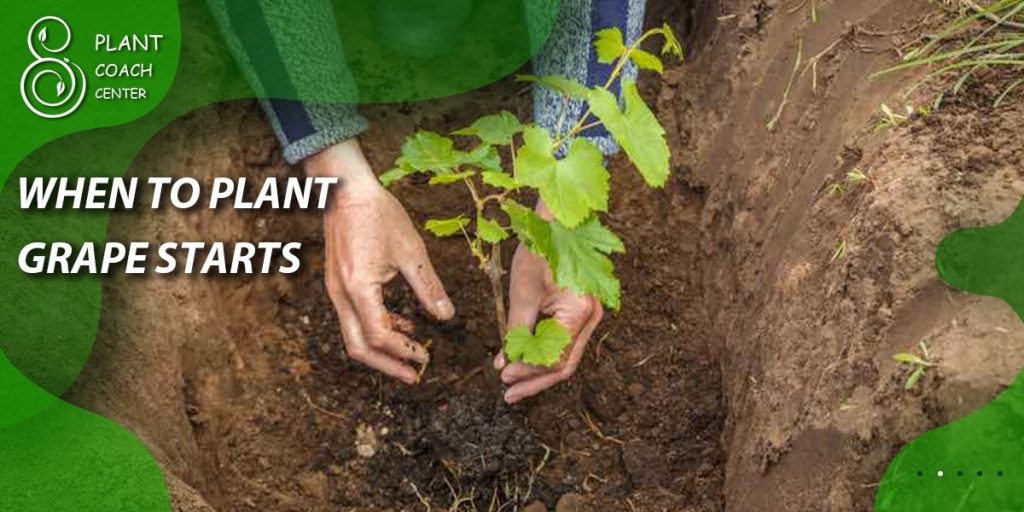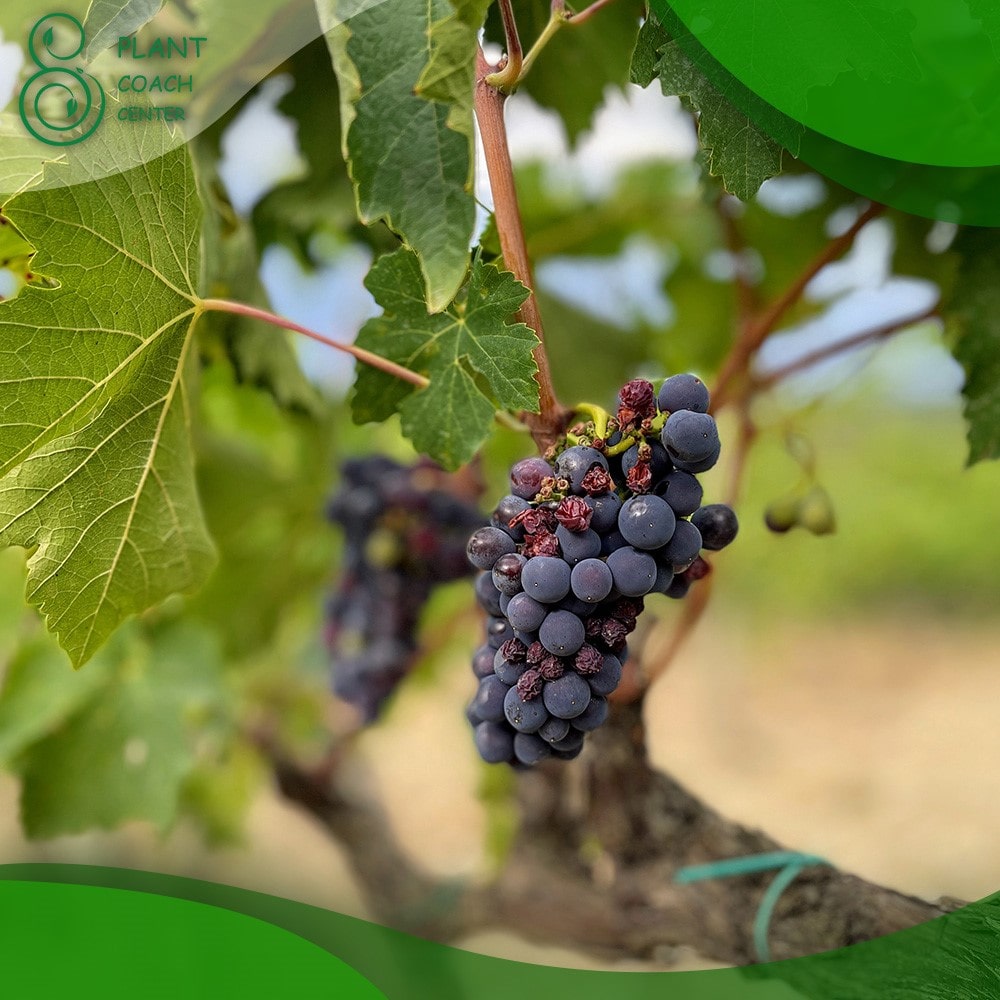When Do You Plant Grapes?

Welcome to the world of viticulture, where the art of cultivating grapes intertwines with the science of timing. Whether you’re a seasoned gardener expanding your horizons or a budding enthusiast eager to dive into grapevine cultivation, understanding the pivotal question of “When do you plant grapes” is your first step towards a fruitful journey.
Planting grapes isn’t merely a task; it orchestrates nature’s rhythms and the intricate dance between soil, weather, and vine. As you embark on this horticultural voyage with visions of future harvests and glasses of fine wine, this guide will unravel the temporal nuances of grapevine planting.
From deciphering the cryptic language of seasons and their unique offerings to decoding the subtle cues that the environment presents, we’ll navigate the labyrinth of grapevine chronology. So, grab your gardening gloves and a sense of curiosity as we explore the symphony of timing that sets the stage for a flourishing grapevine endeavor.
Grapevine Timing Tango: Choosing the Perfect Season
In the intricate choreography of grapevine cultivation, selecting the right season to plant can make all the difference. Each season offers its advantages and challenges, and understanding these nuances can significantly impact the success of your grape-growing venture.
Spring Serenade: Awakening to Possibilities
With its gentle breezes and warming temperatures, spring is a favored time for grapevine planting. As the earth awakens from its winter slumber, grapevines experience growth energy. Planting in spring allows the vines to establish their root systems before the heat of summer sets in.
This period also aligns with the grapevine’s natural growth cycle, making it an opportune moment to introduce new plants to the soil. However, be cautious of late frosts that can harm tender buds, and ensure your chosen grape variety matches your region’s springtime conditions.
Summer Sonata: Navigating the Heat
While planting in summer may seem counterintuitive due to the scorching temperatures, it can be feasible in cooler or milder climates. Container-grown grapevines are particularly suited for summer planting, as they have well-established root systems and can better endure the heat.
Adequate irrigation and shade are crucial during this period to prevent stress on young plants. Additionally, a summer planting might allow you to take advantage of end-of-season plant sales, potentially saving on costs.
Fall Flourish: Harvesting Opportunities
Autumn presents another window of opportunity for planting grapes. As the temperatures begin to cool and the water demand lessens, grapevines can be produced with a reduced risk of heat stress. The moist soil and cooler air promote root development without the pressure of immediate fruit production. However, planting too late in the fall could leave the vines vulnerable to winter frost before they’ve established themselves.
Reading Nature’s Clues: Signs That It’s Planting Time
Nature is a master communicator, offering subtle clues to guide your grapevine planting endeavors. Reading these signals can help determine the optimal time to introduce your grapevines to the earth, ensuring they receive the best possible start.
Bud Break Brilliance: One of the most reliable signs that planting time is approaching is the phenomenon known as bud break. As temperatures rise and the days lengthen, grapevines awaken from their winter dormancy. Keep a keen eye on the buds—when they start to swell and show the first hints of green, it’s a strong indicator that the soil is warming up and ready to welcome new plants.

Soil Temperature Symphony: Soil temperature plays a pivotal role in grapevine growth. Invest in a soil thermometer to regularly monitor the soil’s temperature at the root level. Different grape varieties have specific temperature preferences for optimal growth. As the soil temperature reaches the desired range for your chosen type, it’s a clear cue that planting time is at hand.
Moisture Melodies: Moisture levels in the soil are another critical factor to consider. Dirt that’s overly wet or too dry can hinder successful planting. A well-draining soil that retains adequate moisture without becoming waterlogged is ideal. Before planting, dig a small hole and assess the soil’s moisture content at various depths. If the earth crumbles when squeezed but holds its shape when lightly pressed, it’s in the Goldilocks zone for planting.
Leafy Language: Observing the foliage of nearby plants can provide valuable insights. When native trees and shrubs begin to unfurl their leaves, it’s a signal that the local climate is transitioning to more favorable conditions for grapevine growth. This synchronization of plant activity is a natural indicator that you can heed when determining planting timing.
A Symphony of Senses: Engage your senses to gather environmental clues. Listen for the songs of migrating birds and the hum of insects—they’re attuned to seasonal shifts. Feel the texture of the soil; if it’s comfortably warm to the touch and not overly damp, it’s likely suitable for planting. Trust your intuition, honed by observing and interacting with the rhythms of nature.
Chilling Hours and Thrilling Wines: Navigating Cold Requirements
Just as a grapevine’s roots dig deep into the soil, its growth journey is intricately intertwined with the concept of chilling hours. Understanding these cold requirements is essential for selecting grape varieties that thrive in your climate and ensuring a successful grape-growing experience.
Decoding Chilling Hours
Chilling hours, also referred to as chill units or chilling accumulation, are the cumulative hours during which temperatures remain within a specific range (usually 32°F to 45°F or 0°C to 7°C). These chilly periods play a critical role in breaking the dormancy of grapevines and initiating bud development. Different grape varieties have varying chilling hour requirements—some types demand fewer chilling hours, while others need more to progress through their growth stages.
Matching Variety to Climate
Research is paramount when it comes to selecting grape varieties for your region. Consider your local climate and the average number of chilling hours it receives. Opt for grape varieties with lower chilling requirements if you’re in an area with mild winters and fewer chilling hours. In colder climates, types that need higher chilling hours will be better suited for your conditions.
Balancing bud break and Frost Risk
While chilling hours are crucial for growth, they also introduce the risk of late spring frost damage. If grapevines break dormancy too early due to insufficient chilling hours, their young buds can be vulnerable to frost, resulting in crop loss. Conversely, if grapevines haven’t received enough chilling hours, their growth might be delayed, affecting the overall health and yield of the vine.
Microclimates and Creative Solutions
Microclimates can provide a workaround for regions with insufficient chilling hours. South-facing slopes, areas near bodies of water, and locations sheltered from prevailing winds tend to accumulate more heat, effectively creating microclimates supporting grapevine growth. To your advantage, utilize these natural pockets of warmth by planting varieties that might need slightly more chilling hours than your region typically provides.
Adapting to Change
With climate change altering traditional weather patterns, it’s essential to stay informed about your area’s evolving chilling hour trends. As winters become milder or colder, the chilling hour accumulation might fluctuate, influencing your grapevine planting decisions. Monitor local climate data and consult with local horticultural experts to adapt your choices accordingly.

Soil Serenade: Preparing the Earth for Grapevines
Before grapevines can take root and thrive, the stage must be set with a symphony of soil preparation. Just as a musician tunes their instrument before a performance, you must fine-tune the soil to create an ideal environment for your grapevines to flourish.
The overture to successful grape cultivation begins with a soil test. This analysis provides valuable insights into the soil’s pH, nutrient levels, and composition. Armed with this information, you can make informed decisions about soil amendments, ensuring your grapevines receive the essential nutrients they need.
Texture Tango
Soil texture, a key factor, determines drainage and aeration. Grapevines prefer well-draining soil to prevent waterlogged roots. Loam soil, which balances sand, silt, and clay, is often the gold standard. If soil leans towards heavy clay, amending it with organic matter can enhance drainage, while sandy soil can benefit from increased water retention through compost incorporation.
pH Harmonization
Soil pH influences nutrient availability. Most grapevines thrive in slightly acidic to neutral soil (pH 6.0 to 7.0). Adding lime can help raise the pH if your soil is too acidic. Conversely, sulfur can lower the pH if it’s too alkaline. Achieving the proper pH ensures that your grapevines can access nutrients efficiently.
Organic Overture
Enrich your soil with organic matter—a crescendo that promotes soil structure, moisture retention, and nutrient availability. Compost, well-rotted manure, and cover crops are excellent sources of organic matter. These additions also encourage beneficial microorganisms that contribute to soil health.
Mulch Melody
Once your grapevines are planted, a layer of mulch serves as a protective refrain. Mulch conserves soil moisture, regulates temperature, and suppresses weed growth. Organic mulches, such as straw or wood chips, gradually break down, enriching the soil.
Drainage Duet
Proper drainage is crucial for avoiding waterlogged roots. If your planting area is prone to poor drainage, consider planting on slightly elevated mounds to improve airflow and water movement. Installing drainage systems can also prevent excess moisture from accumulating around the roots.
Patient Prelude
After amending and cultivating the soil, allow it to settle for a few weeks before planting. This period stabilizes the soil structure, giving microorganisms time to establish themselves and creating a hospitable environment for grapevines.

Rooting for Success: Best Practices for Planting Grapevines
Planting grapevines is a tactile act setting the stage for years of growth and fruition. From selecting the right location to executing precise planting techniques, following these best practices ensures that your grapevines get the best possible start and flourish into robust, productive plants.
Ideal Spot Selection
Choose a planting site that receives ample sunlight, as grapevines thrive in full sun. A southern or southeastern exposure is often ideal, allowing the vines to bask in sunlight throughout the day. Ensure the site has good air circulation to prevent disease development and to encourage the vines to dry quickly after rain.
Soil Examination
Dig a hole to assess the soil’s drainage and structure before planting. If the pit fills with water and drains slowly, you should improve drainage by amending the soil or considering raised beds. Loose, well-aerated soil encourages strong root growth, so break up compacted ground in the planting area.
Proper Spacing
Respect the personal space of your grapevines. Plant them at the recommended spacing for your chosen variety. Giving each vine enough room to spread its roots prevents competition for nutrients and water, ultimately promoting healthier growth.
Digging and Planting Depth
When planting, dig a hole deep and wide enough to comfortably accommodate the root system without crowding or bending the roots. The depth at which you produce the vine is crucial. Position the graft union (if present) above the soil line to prevent rootstock growth and encourage the scion’s development.
Gently Teasing Roots
If planting container-grown grapevines, gently tease the roots before planting to encourage them to spread out in the new soil. For bare-root vines, soak the seeds in water for a few hours before planting to rehydrate them.
Backfill and Watering
Fill the hole with soil, ensuring the roots are spread out and not cramped. Gently tamp down the ground to remove air pockets. Water the vine thoroughly after planting to settle the soil around the roots. Applying a layer of mulch around the base of the plant helps conserve moisture and regulates soil temperature.
Sturdy Support Systems
If planting grapevines for a vertical trellis system, install the trellis before planting. This ensures that you can carefully place the vine near the support system without disturbing its roots later.
Tender Loving Care
Closely monitor the grapevines for the first few weeks after planting. Water them regularly to keep the soil consistently moist but not waterlogged. Prune any broken or damaged roots as you notice them.
Patience & Potential: Nurturing Young Grapevines to Maturity
Planting grapevines is not just a one-time event; it marks the beginning of a long and rewarding journey. As you watch those young vines take root and grow, nurturing them through their early years is a delicate art that requires patience, dedication, and a keen understanding of their evolving needs.
Water Wisdom
Proper watering is crucial in the initial years. Young grapevines have shallow root systems that need consistent moisture to establish themselves. Water deeply and infrequently to encourage roots to grow deeper into the soil. Adjust your watering regimen based on weather conditions, aiming for the right balance between moisture and drainage.
Training & Trellising
As the vines grow, provide them with a framework for upward growth. Select an appropriate trellis system depending on the grape variety and desired vineyard style. Gently train the vines along the trellis, securing them as needed. This process encourages even growth, facilitates sunlight exposure, and makes maintenance tasks more manageable.

Vigilant Pruning
Pruning is an art that shapes the vine’s growth. Focus on building a solid trunk and a few well-placed lateral branches in the first few years. Pruning helps balance vegetative growth with fruit production and establishes a well-structured vine supporting future grape clusters.
Pest & Disease Protection
Young grapevines can be susceptible to pests and diseases. Regularly inspect your vines for signs of trouble, such as damaged leaves or unusual discoloration. Employ integrated pest management strategies, which include introducing beneficial insects or using organic treatments when necessary.
Mulch Management
Maintain a layer of mulch around the base of the grapevines, keeping it a few inches away from the trunk. Mulch helps retain soil moisture, regulates temperature, and minimizes weed competition. As the mulch breaks down over time, it contributes organic matter to the soil.
Patience & Persistence
Grapevines are not known for their rapid growth. It takes several years for them to mature and produce significant fruit yields. Be patient during this time, allowing the vines to develop robust root systems and sturdy trunks. Your patience will be rewarded with healthier, more resilient plants.
Celebrating Milestones
Mark milestones in your grapevines’ growth journey. The first blooms, the development of fruit clusters, and the first harvest are moments to celebrate. These milestones signal progress and remind you of the journey you’ve embarked upon.
Conclusion
In the intricate tapestry of grapevine cultivation, timing and care intertwine to compose a masterpiece of growth and flavor. Your journey from selecting the perfect season, deciphering nature’s whispers, understanding chilling hours, preparing the soil, and planting with precision has just begun.
As you embark on the patient endeavor of nurturing young vines, remember that the grapevines you now tend with such care will one day reward you with bountiful harvests and the essence of your dedication bottled into fine wines.
Whether you’re a novice with a thirst for knowledge or a seasoned gardener seeking new insights, the symphony of guidance offered by PlantCouchCenter.com resonates through these words, connecting you to a community passionate about cultivating the earth’s treasures. So, as your grapevines reach for the sun and stretch their roots into the soil, let your journey be a harmonious dance with nature, guided by wisdom and enriched by the promise of the vines’ verdant legacy.
When is the ideal time to plant grapes?
The ideal time varies by region, but early spring or late fall is generally best for planting grapevines.
How do I know if my grapevines need more chilling hours?
Different grape varieties have specific chilling hour requirements; monitor local climate data and select varieties suited to your area.
What's the key to nurturing young grapevines?
Provide proper watering, training, and patience during the initial years to establish healthy vines.







